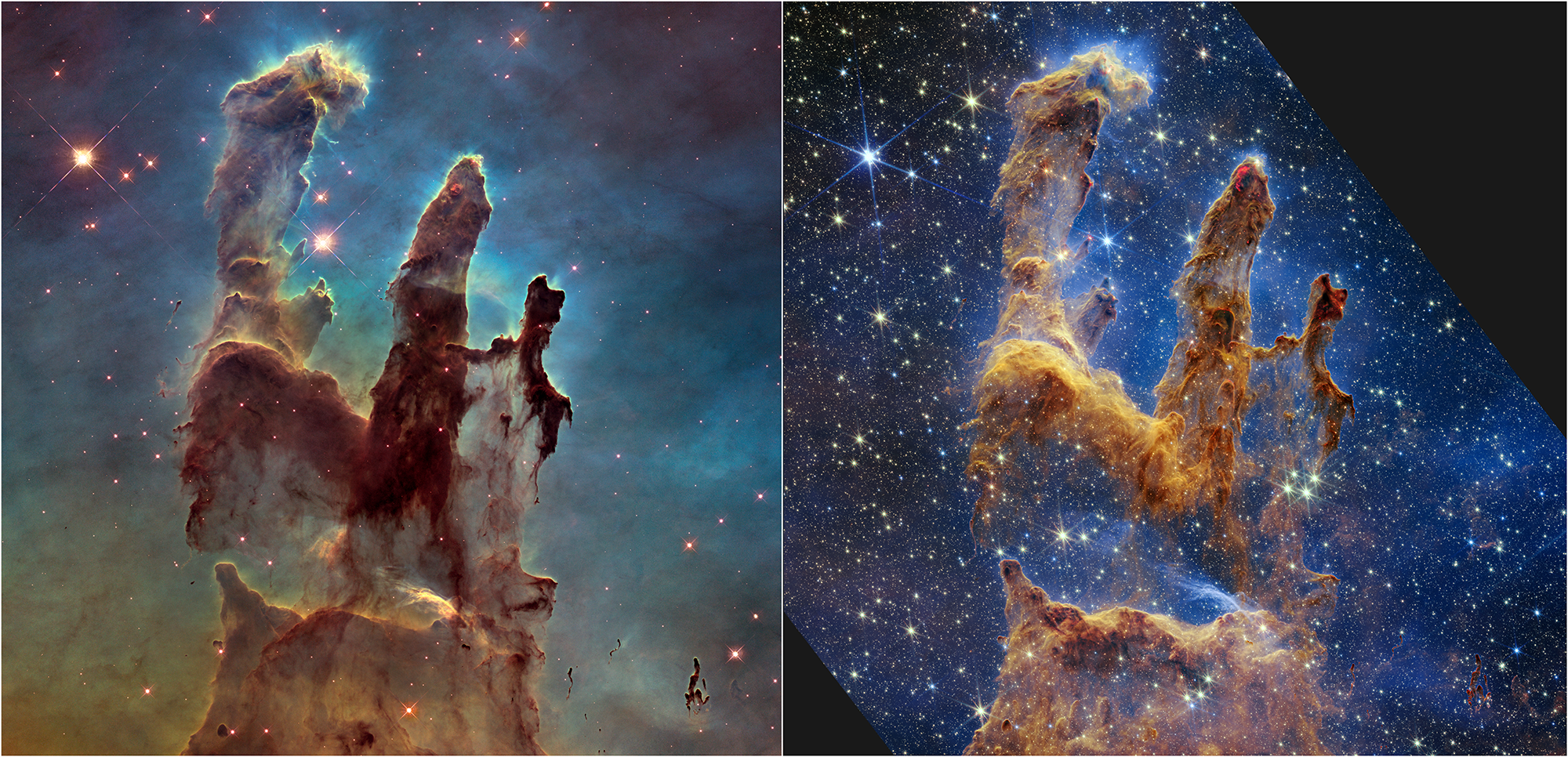Eagle Nebula is a region of gas and dust in the constellation Serpens, the Snake. The nebula appears as a broad, glowing arc interrupted by a dark, triangular wedge of gas, giving it the appearance of an eagle spreading its wings. The Eagle Nebula is designated M16 in the catalog of nonstellar objects created by the French astronomer Charles Messier in the late 1700’s. It is designated NGC 6611 in the New General Catalogue, a widely used work of astronomical reference. The Eagle Nebula is about 6,500 light-years from Earth. One light-year equals the distance light travels in a vacuum in a year, about 5.88 trillion miles (9.46 trillion kilometers). The Eagle Nebula’s brightest star cluster was discovered by the Swiss astronomer Jean-Philippe de Cheseaux in the mid-1740’s.

The Eagle Nebula has long been known to amateur astronomers for its shape and for the star clusters it contains. But the nebula captured wider attention when the Hubble Space Telescope photographed part of it in 1995. The iconic image showed “fingers” of dust silhouetted against a background of blue-green light. This feature has been called the “Pillars of Creation.” In 2014, Hubble again photographed the pillar region with a wider field of view and an upgraded camera.
The apparent pillars within the Eagle Nebula are each about 5 light-years tall. Young, hot stars above the frame of the image bathe them in strong ultraviolet light, causing them to glow. The apparent tops of the pillars are being evaporated by this radiation. The dust that makes up the pillars shields newly formed stars inside. Infrared images, such as those from the European Space Agency’s Herschel Space Observatory , show these stars inside the dust. 
